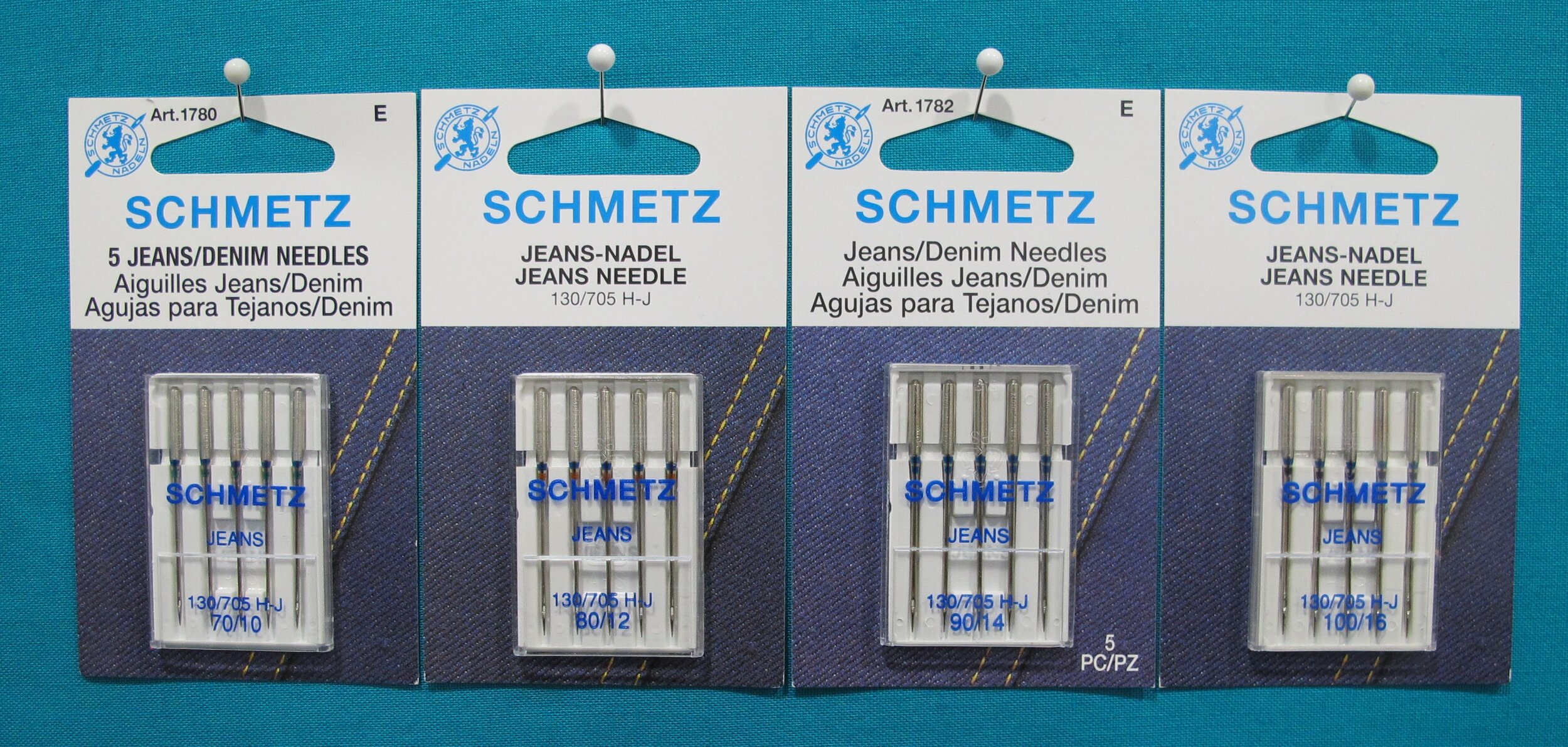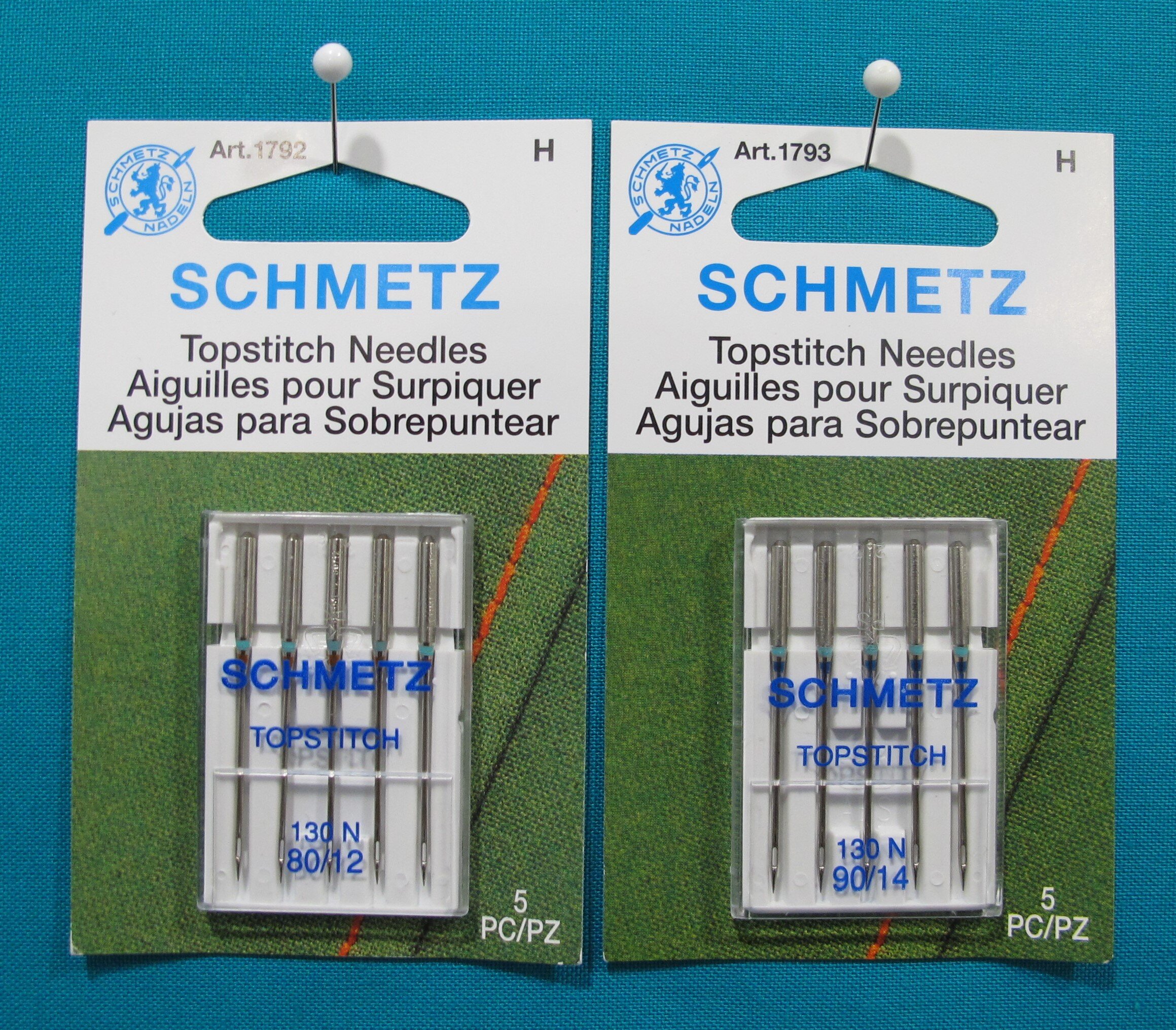All About Sewing Machine Needles
I'm a firm believer that when you have the right tools to work with the job is more enjoyable because not much can go wrong. The proper needle for the type of sewing that you do is one of those instances.
I'm not a huge proponent of using a universal needle unless you are one of those people who hauls out the old sewing machine once a year to make a Hallowe'en costume or hem a set of curtains. Because most of you who are reading this post are probably quilters I'll offer up my personal needle choices for the type of sewing that we do as quilters, but I'll also talk about a few others that you may use on occasion.
The brand of needles that I use is Schmetz. I find them to be of high quality and they last longer than other brands I've tried. Their website is full of excellent information, including the names of the different parts of a needle. They also offer up this great guide for the different needles that they manufacture including how their needles are now colour coded for types of needles and corresponding sizes. Check your local quilt store...some have a free Schmetz needle booklet available...if not you can just check this info out on their website. Here's a useful link from their website!
When you purchase a pack of needles you will see two numbers on the packaging. The first number is the Metric size and the second number is the Imperial size (eg. 80/12...80=Metric, 12=Imperial). When it comes to machine needles the smaller the number the thinner the needle and the finer the fabric it is to be used on.
For machine piecing my quilt tops my go-to needle is a #70/10 Denim, but if I don't have one of those I'll use a #80/12 Denim which is slightly larger. I can see that quizzical look on your face...“but Sharon, I'm not sewing with denim when I piece my quilts!” Yes, I know I'm just using regular quilting cotton, but the reason I like it is because of the extremely sharp point and thin shaft. It just glides through the fabric like a knife through soft butter. Of course I also have #14-#16 Denim needles when I actually hem jeans, but they are much too thick for piecing my quilts.
For machine quilting on my Janome 6700 I use a #12 Topstitch needle, but if I don't have one of those I'll use a #14 Topstitch. I do prefer the #12 because it leaves a smaller hole. Again, I can see the quizzical look on your face...“but Sharon, I'm not topstitching a jacket lapel, I'm quilting!” The Topstitch needle has a much larger elongated eye that can accommodate thicker thread and there is less friction on the thread when it goes through the eye of the needle so there is less thread breakage. And remember, just like a lapel that has all those layers your quilt has a backing, batting and a top with many seam allowances intersecting. I also use it when sewing with metallic threads and have had great results with no breakage, but part of that is due to the way that the metallic thread feeds off the machine (more on that in Working With Unruly Threads).
When working with knits I use a Jersey/Ballpoint needle, when doing machine appliqué I use an Embroidery needle and when working with pesky microfibres and coated fabrics I use a Microtex needle. Just check the Schmetz guide to see what you should be using for the material you plan on working with.
My feelings won't be hurt if you don't use the needles I've suggested. If you have other needles that you've been using that work well for you, continue using them. I'm merely giving you information on what works well for me. Each person, and each machine, has their favourites.
And remember that in the big scheme of things needles are inexpensive. Change your needles frequently…when you hear the “thwack,thwack” sound as the needle penetrates the fabric that sucker is dull and it needs a replacement.



